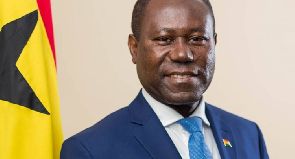Ghana Cocoa Board may struggle to fully pay back loans of $1.3 billion as this season’s harvest will likely be smaller than first anticipated, according to the head of the industry regulator.
than first anticipated, according to the head of the industry regulator.
The world’s second-biggest grower signed for the loans with lenders such as Credit Agricole SA and Natixis SA prior to the start of the annual harvest in October to pay farmers for their beans. Ghana will probably not meet its target of 850,000 metric tons due to dry weather and plant disease, Joseph Boahen Aidoo, Chief Executive Officer of the regulator, said Monday in an interview in the capital, Accra.
While recent rains may improve yields in the smaller harvest that runs from June to September, they may not be sufficient to make up for losses suffered in the main harvest that continues until then, he said. He declined to give a new forecast for the crop.
“We are only praying that we’ll be able to meet our collateralized facility because the crop wasn’t as good as anticipated,” Aidoo said. “We just started paying the first instalment” in February, he said.
On Tuesday, Aidoo said the board does expect to meet its financial obligations for the crop year.
“We have shown over the past 25 years that Cocobod is credible and has never defaulted and will not default this year,” he told reporters.
The board purchased 625,111 tons of cocoa for the season through Feb. 22, compared with 640,075 tons for the same period in the previous crop, according to a person familiar with the matter.
While Ghana may not achieve its forecast for the season, it’s already selling cocoa at a loss after it chose not to lower prices for farmers even as global prices slumped by a third from July 2016 through the end of last year. The regulator is losing the equivalent of about $600 for every ton sold this season, it said in February.
The board is in talks with the government on ways to pay for operational expenses and liabilities as the cost of debt on local markets is too expensive, Aidoo said on Monday. Over the past year, it sold bills and notes at rates of as much as 22 percent, according to data compiled by Bloomberg.
“We are still discussing with government and we’ll find some solutions,” Aidoo said.
For the next harvest, the cocoa board will target a harvest of 900,000 tons and again seek to raise $1.3 billion in syndicated loans, he said. Last month, the International Cocoa Organization forecast a 900,000-ton harvest for this season.
Neighbouring Ivory Coast is the top global producer.